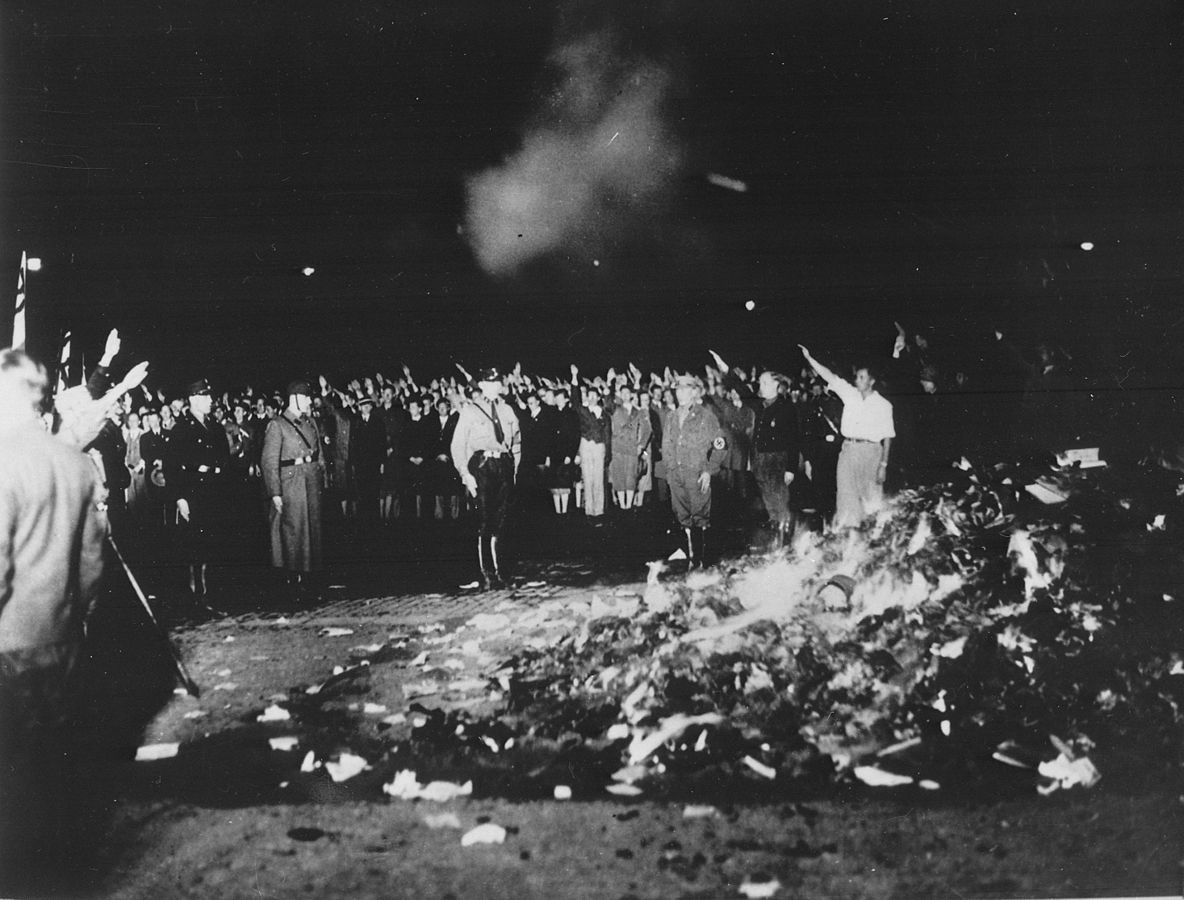Book Burning by National Socialist Students, Berlin’s Opera Square (May 10, 1933)
Abstract
Destroying “dangerous” books was a historical practice in Western civilization. A form of negative control over the dissemination of knowledge, destroying books allowed ecclesiastical, political, or other authorities to limit what people could learn or know in the interest of ensuring the “public good,” as defined by those very same authorities. One of the most common methods of destroying books was burning them. In the pre-modern era, fire was thought to chase away the offending books’ “evil spirits,” even as it eradicated the “poison” and “plague” these books supposedly contained. The Nazis played upon both of these spiritual and biological metaphors when burning books in symbolic performances of state authority that are still unsettling today. In May and June of 1933, the National Socialist German Students’ League (NSDStB) organized a series of public book burnings that targeted works by “Jewish,” “Bolshevik,” and “Socialist” authors, as well as other “un-German elements.” The largest of these events took place on May 10, 1933, on Berlin’s Opera Square [Opernplatz], where approximately 20,000 books were consigned to the flames.
Source

Source: Bundesarchiv, Bild 102-14597 / Georg Pahl
This work is licensed under the Creative Commons Attribution-ShareAlike 3.0 License.